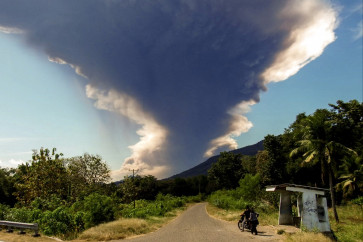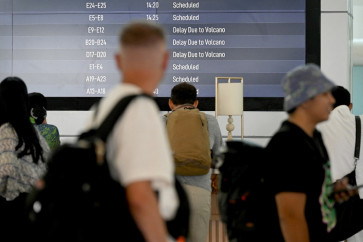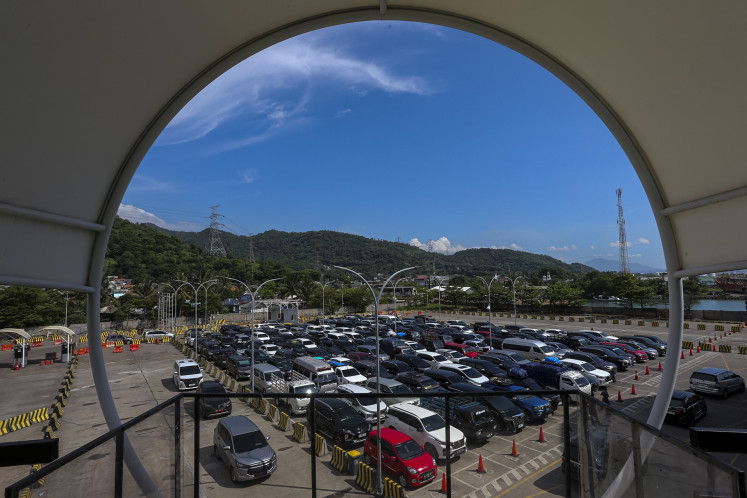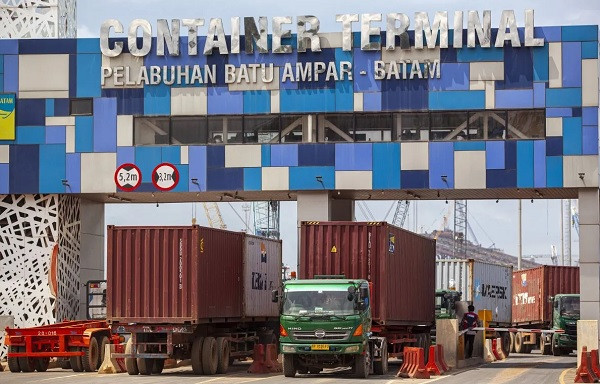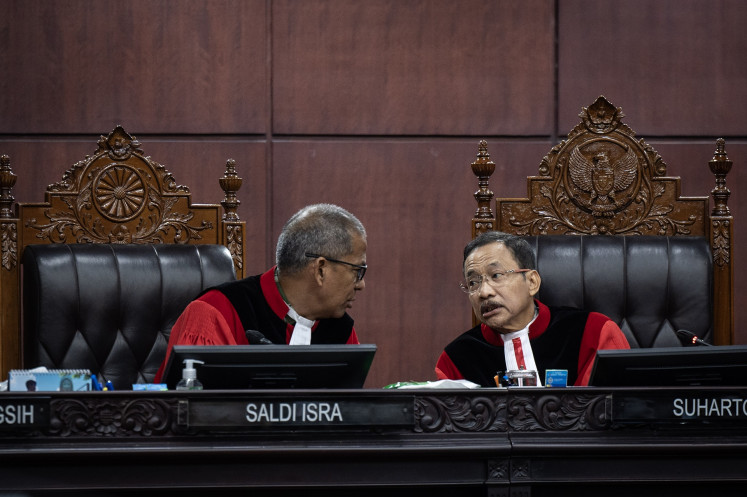Popular Reads
Top Results
Can't find what you're looking for?
View all search resultsPopular Reads
Top Results
Can't find what you're looking for?
View all search resultsBI builds up foreign debt monitoring amid fears in Greece
Bank Indonesia (BI) is strengthening its monitoring systems for the country’s foreign debts amid growing default fears in Greece, which have sparked social unrest and political division in the European Union member nation
Change text size
Gift Premium Articles
to Anyone
B
ank Indonesia (BI) is strengthening its monitoring systems for the country’s foreign debts amid growing default fears in Greece, which have sparked social unrest and political division in the European Union member nation.
BI spokesman Difi A. Johansyah said in Jakarta Thursday that although the position of Indonesia’s foreign debts remained at a safe level, the central bank intended to strengthen its reporting systems to ensure that similar circumstances presently occurring in Greece would not take place in Indonesia.
“We remain alert regarding the Greek debt crisis. We continue to strengthen our monitoring
systems for foreign debt, among others,” he said, adding that Indonesia’s debt-to-gross domestic product (GDP) ratio was currently at 26 percent — far below the ideal ratio that he considered to be
60 percent.
BI data shows Indonesia’s external debt amounted to US$214.5 billion as of in April 2011; $85.9 billion of which is owed by the private sector and the remaining $128.6 billion in government obligations.
Despite worsening street violence, Greece on Wednesday approved the first of two austerity measures, which over a five-year framework would involve spending cuts of $28 billion, tax increases and state asset sales — all in a gigantic push to win fresh international aid so the country can pay its debts on time and stave off bankruptcy.
Indonesia experienced similar pressure during the 1997/1998 Asian financial crisis, when rapid depreciation of the rupiah against the US dollar resulted in corporate debt defaults. The rupiah fall also affected government debt.
“It is good to always remind private sector businesses to prudentially manage foreign debt. They need to know risk mitigation, but the private sector behavior has been far different than in 1997-1998. At present, they care more [about their debt position],” he added.
Most of the $85.9 billion private external debts ($72.5 billion) are reportedly owed by non-banking
institutions, while the remaining $13.4 billion are believed to be owed by banks.
The central bank’s crisis management protocol to monitor external debt include macroeconomics and financial indicator ratios, namely debt to GDP, short-term debt-to-reserves, short-term debt-to-exports, as well as disbursement and payment, Difi said.
“Since 1997 through the first quarter of this year, such ratios for Indonesia have continued to slide.”
“The [data] is used to assess domestic and external vulnerability and conditions of financial markets and institutions in the country to measure [debt] conditions, whether it’s ‘normal’, ‘aware’, ‘alert’ or ‘crisis’,” he added.
Several economists, however, such as Faisal Basri of the University of Indonesia, have taken a stance opposite of the central bank and the government, saying that the country should be spending more for development projects, and given the growing productive population, the country should borrow more.


